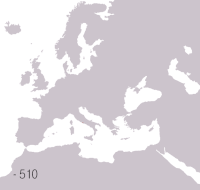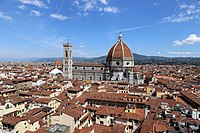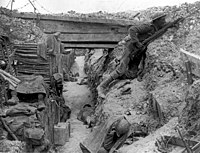-
Use Cases
-
Resources
-
Pricing
Ancient Civilizations
Building of the Great Pyramids of Giza
2580 BCE - 2560 BCE
% complete
The construction of the Great Pyramids of Giza in ancient Egypt represents the pinnacle of architectural and engineering achievements. These monumental structures served as tombs for pharaohs and showcased the power and wealth of the Egyptian civilization.
Image source: Great Pyramid of Giza

Founding of the Roman Republic
509 BCE
% complete
The establishment of the Roman Republic marked the transition from monarchy to a republican form of government. This event laid the foundation for the expansion and dominance of Rome in the Mediterranean region.
Image source: Roman Republic

Reign of Emperor Ashoka
268 BCE - 232 BCE
% complete
Emperor Ashoka, ruler of the Maurya Empire in ancient India, played a crucial role in spreading Buddhism and promoting religious tolerance. His reign marked a significant period of political stability and cultural diffusion in South Asia.
Image source: Ashoka

Reign of Emperor Qin Shi Huang
221 BCE - 210 BCE
% complete
Emperor Qin Shi Huang, the first emperor of unified China, implemented significant political and cultural reforms, including the construction of the Great Wall of China and the standardization of writing and currency.
Image source: Qin Shi Huang

Reign of Emperor Augustus
27 BCE - 14 CE
% complete
Augustus, the first emperor of the Roman Empire, initiated a period of peace and stability known as the Pax Romana. His reign marked the beginning of the Roman Empire and the consolidation of power.
Image source: Augustus

Fall of the Western Roman Empire
476 CE
% complete
The fall of the Western Roman Empire marked the end of ancient Rome and the beginning of the Middle Ages in Europe. Various factors, including invasions, economic decline, and political instability, led to the collapse of the Western Roman Empire.
Image source: Fall of the Western Roman Empire

Medieval Period
Islamic Golden Age
700 - 1399
% complete
The Islamic Golden Age was a period of significant cultural, scientific, and intellectual advancements in the Islamic world. Scholars made significant contributions in various fields, including mathematics, astronomy, medicine, and philosophy.
Image source: Islamic Golden Age

Viking Age
793 CE - 1066 CE
% complete
The Viking Age was characterized by Norse seafaring and exploration, with Vikings raiding and trading across Europe, Asia, and the North Atlantic. Their influence left a lasting impact on the regions they encountered.
Image source: Viking Age

Mongol Empire
1206 CE - 1368 CE
% complete
The Mongol Empire, founded by Genghis Khan, was the largest contiguous empire in history. Its rapid expansion and military prowess transformed Eurasia, facilitating cultural exchanges and trade along the Silk Road.
Image source: Mongol Empire

Renaissance
1300 - 1699
% complete
The Renaissance was a period of cultural and intellectual rebirth in Europe, characterized by advancements in art, literature, science, and philosophy. It marked a transition from the Middle Ages to the modern era.
Image source: Renaissance

Black Death
1347 CE - 1351 CE
% complete
The Black Death, a devastating pandemic caused by the bubonic plague, resulted in the widespread loss of life and had profound social, economic, and cultural consequences in Europe during the Middle Ages.
Image source: Black Death

Age of Exploration
1400 - 1699
% complete
The Age of Exploration saw European explorers embark on voyages of discovery, expanding knowledge of the world and establishing global trade networks. Explorers like Christopher Columbus and Ferdinand Magellan made significant contributions to maritime exploration.
Image source: Age of Discovery

Modern Era
Scientific Revolution
1500 - 1799
% complete
The Scientific Revolution marked a paradigm shift in scientific thought, challenging traditional beliefs and fostering the development of the scientific method. Prominent figures like Copernicus, Galileo, and Newton revolutionized our understanding of the natural world.
Image source: Scientific Revolution

Industrial Revolution
1700 - 1899
% complete
The Industrial Revolution marked a significant shift from agrarian societies to industrialized economies, driven by technological advancements in manufacturing, transportation, and agriculture. It transformed social, economic, and environmental conditions worldwide.
Image source: Industrial Revolution

American Revolution
1775 CE - 1783 CE
% complete
The American Revolution was a war fought by American colonists seeking independence from British rule. It resulted in the establishment of the United States of America and inspired movements for self-determination worldwide.
Image source: American Revolution

French Revolution
1789 CE - 1799 CE
% complete
The French Revolution was a period of radical social and political upheaval in France, leading to the overthrow of the monarchy and the rise of Napoleon Bonaparte. It had far-reaching consequences for European politics and society.
Image source: French Revolution

World War I
1914 CE - 1918 CE
% complete
World War I was a global conflict involving major powers, characterized by trench warfare, technological advancements, and significant loss of life. It reshaped the geopolitical landscape and set the stage for future conflicts.
Image source: World War I

Russian Revolution
1917 CE - 1923 CE
% complete
The Russian Revolution resulted in the overthrow of the Russian monarchy and the establishment of the Soviet Union. It led to significant political, social, and economic changes in Russia and had a profound impact on the 20th century.
Image source: Russian Revolution

World War II
1939 CE - 1945 CE
% complete
World War II was a global conflict involving many nations, characterized by widespread destruction, genocide, and the use of atomic weapons. It reshaped the balance of power and led to the formation of the United Nations.
Image source: World War II

Key Facts
- The Neolithic Revolution marked the transition from hunter-gatherer societies to agricultural societies.
- The Silk Road facilitated trade and cultural exchange between China, the Middle East, and Europe.
- The Incas built a vast empire in the Andes region of South America.
- The Black Death pandemic in the 14th century devastated Europe and had far-reaching social and economic consequences.
- The Industrial Revolution in the 18th century transformed society through mechanization and urbanization.
Source
This AP World History timeline was generated with the help of AI using information found on the internet.
We strive to make these timelines as accurate as possible, but occasionally inaccurates slip in. If you notice anything amiss, let us know at [email protected] and we'll correct it for future visitors.
Create a timeline like this one for free
Preceden lets you create stunning timelines using AI or manually.
Customize your timeline with one of our low-cost paid plans
Export your timeline, add your own events, edit or remove AI-generated events, and much more
Free
$
0
free forever
No credit card required.
Basic
$
10
/month
billed annually
Cancel anytime.
Pro
$
16
/month
billed annually
Cancel anytime.
Common Questions
Can I cancel anytime?
Yes. You can cancel your subscription from your account page at anytime which will ensure you are not charged again. If you cancel you can still access your subscription for the full time period you paid for.
Will you send an annual renewal reminder?
Yes, we will email you a reminder prior to the annual renewal and will also email you a receipt.
Do you offer refunds?
Yes. You can email us within 15 days of any payment and we will issue you a full refund.
What if I have more questions?
Check out our pricing docs or send us an email anytime: [email protected].